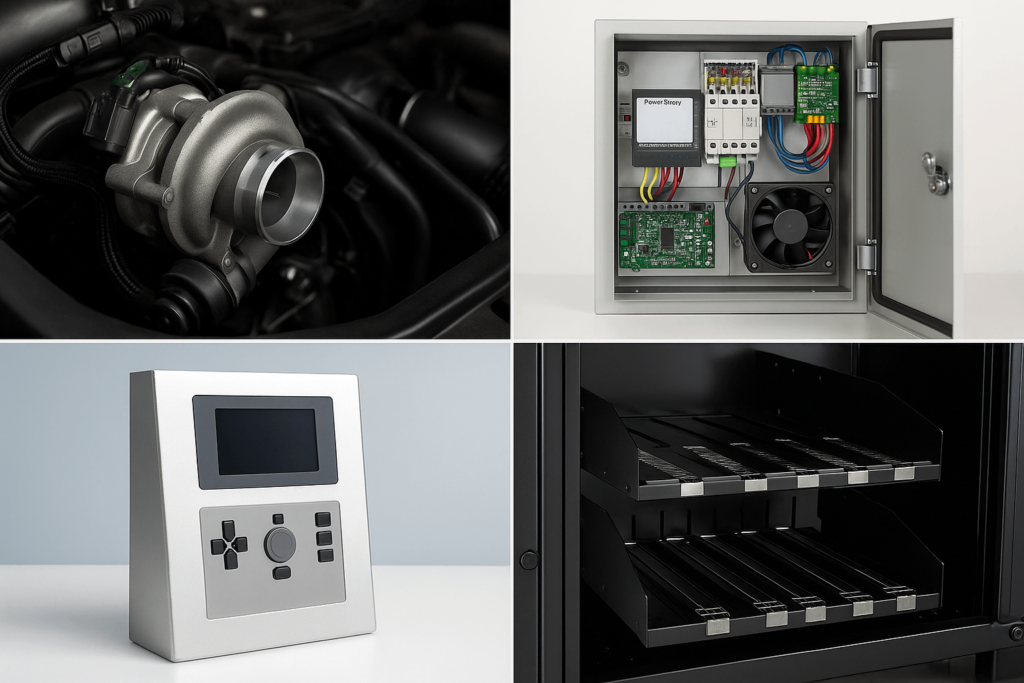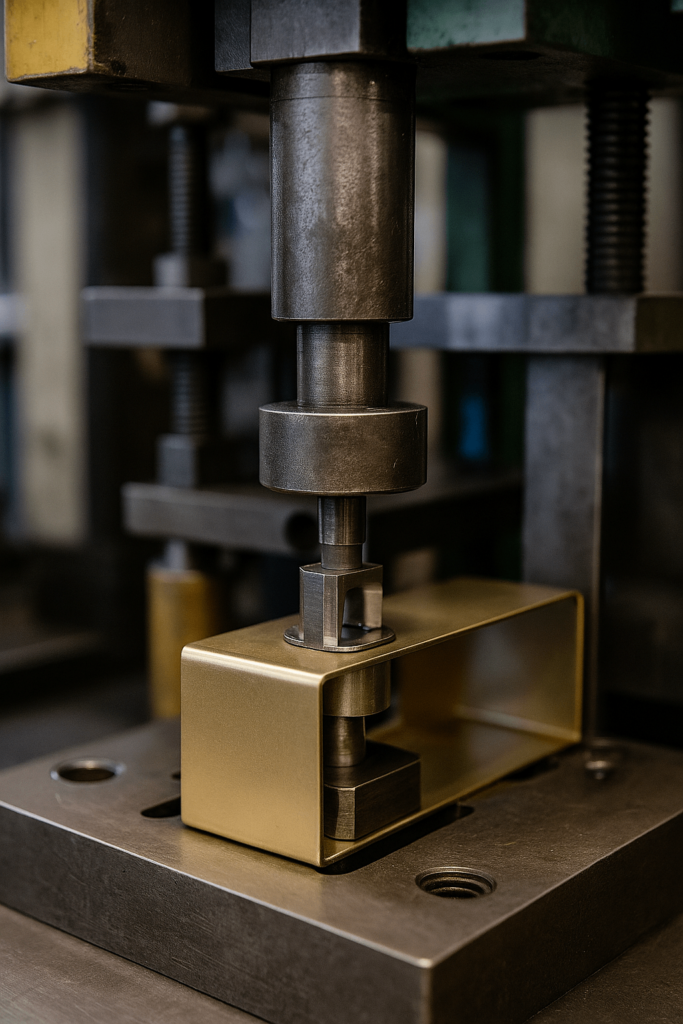What Is a Press Fit — And Why It Matters in Manufacturing
Press fits are essential to modern mechanical assemblies — used everywhere from electric motors to vending machines.
For wholesale buyers and procurement engineers, understanding what a press fit is (and isn’t) directly impacts sourcing decisions, cost control, and long-term product performance.
A Simple Definition
A press fit involves inserting one component tightly into another, creating an interference that holds them together without fasteners or adhesives.
Relevance for Sourcing and Procurement
A well-designed press fit demands more than dimensional overlap. Its performance relies on controlling tolerances, material behavior, and surface finish — all of which must remain stable under production-scale volumes.
Understanding the fundamentals of press fit design helps procurement professionals assess the production feasibility and long-term reliability of OEM components. Especially in high-mix, high-volume categories like enclosures or structural frames, small tolerance decisions can make or break the success of a project.
The Engineering Behind a Press Fit: Avoiding Common Misconceptions
Overestimating Interference — A Common Pitfall
One of the most frequent mistakes in press fit design is assuming that “tighter is better.” In reality, excessive interference can deform mating parts, increase insertion force to damaging levels, or even cause cracking in softer materials like aluminum or plastics.
For example, a medical device supplier increased their press fit force by 30% in an effort to “improve retention,” only to experience stress fractures in 12% of assemblies within the first production run.
Well-engineered fits use only the interference necessary for the specific material pair, operating environment, and retention load. Surface preparation, roundness, and insertion speed play equal roles in success.
Manufacturing Standards and Control
Dimensional fits are governed by standards like ISO 286 and ANSI B4.2. Common tolerance pairings like H7/h6 or H7/p6 are tailored to different use cases — from slip fits to heavy press fits.
In dynamic assemblies — such as pressed sheet steel housings in vending equipment — precise control is essential due to vibration and fatigue risks.
Suppliers using pressing and punching processes must demonstrate capability to maintain tolerance consistency across large batches.
Ask suppliers whether they use coordinate measuring machines (CMMs) and process control for press fit machining services. Batch-level SPC (Statistical Process Control) data is a good indicator of consistent output in high-volume production.
Fit Design Based on Function: What Buyers Should Know
Performance Defines the Fit
Function determines fit class. Torque transfer needs radial retention; axial force demands contact area. These forces should be quantified early in the design, not guessed post-failure.
YISHANG supports global buyers by reviewing technical intent during RFQ, helping balance fit strength with assembly efficiency through simulation and tolerance planning.
Materials Make the Difference
Material choice affects thermal behavior, wear resistance, and press compatibility. Common press fit combinations — like aluminum-on-steel or brass-on-stainless — have vastly different expansion coefficients and elastic limits.
In high-heat industries like energy storage or EV systems, press fits must withstand expansion cycles. YISHANG assists buyers in evaluating these factors, especially for components exposed to repeated stress or demanding assembly environments.
Surface and Finish Are Critical to Fit Integrity
Surface finish impacts assembly success and fit stability. Rougher finishes increase friction but risk galling; smoother surfaces reduce force variance but may lower retention.
Recommended finish levels range between Ra 0.8–1.6 µm. If coatings are applied, such as powder-coating or zinc plating, they must be factored into fit design. Ask suppliers to document coating thickness and integrate it into the final tolerance stack-up.
Sourcing managers should ensure these variables are part of early DFM discussions, especially for functional interfaces.
Real-World Applications Across Industries
| Industry | Press Fit Use Case |
|---|---|
| Automotive | Driveshafts, sensor housings |
| Electronics | Heatsink mounting, PCB connectors |
| Medical | Surgical tools, diagnostic equipment |
| Energy Storage | Battery module joining |
| Industrial Vending | Panel frames, security locks |
Press fits are indispensable in industries where component stability, vibration resistance, and compact assembly are critical.
Buyers should match application environments (e.g., exposure to heat, chemicals, movement) with the supplier’s experience in that industry. A vendor who regularly serves EV or vending machine clients, for instance, is more likely to anticipate challenges in thermal shift or repeated assembly.

Troubleshooting Common Press Fit Failures
Press fit issues can arise even with precise tolerances if surrounding conditions aren’t ideal. Common failure types include:
Cracking of housings due to excessive press force
Loosening over time caused by surface wear or thermal cycling
Distortion from misaligned insertion or poor fixture design
Preventing these failures starts during the design phase. Choose compatible materials, define proper insertion tools and speeds, and factor in long-term environmental loads.
YISHANG provides failure mode analysis and collaborative DFM services to help buyers avoid common press fit pitfalls.
When Press Fit Isn’t the Best Option
While press fits are highly reliable, some scenarios call for alternative joining methods. For example:
Plastic assemblies may deform under interference loads
High-maintenance parts might benefit from slip fits or fasteners for easy disassembly
High-frequency vibrational environments may require bonded joints for durability
When sourcing metal components with press fit potential, buyers should be prepared to compare options like press brake forming, riveting, or bolted connections — depending on lifecycle and maintenance needs.
A seasoned supplier should offer insights into fit alternatives and when to use them.
Advanced Design Tactics for High-Volume Assembly
Press fit success scales with thoughtful design. Key strategies include:
Using draft angles or lead-ins to reduce insertion damage
Implementing self-locating features to improve alignment
Designing for tool clearance and fixturing in CNC operations
Especially for sheet metal assemblies or frame-based builds, small adjustments can reduce reject rates and press time by 20% or more.
YISHANG often works with procurement teams at the prototyping stage to review fit feasibility before tooling investment.

How to Evaluate a Press Fit Supplier
Reliable suppliers of press fit components should provide:
Tolerancing documentation and drawing validation
Tooling inspection reports and assembly test data
Proven experience with relevant industries and volumes
Ask for case studies and sampling procedures that demonstrate consistency in interference fit tolerances. For large production runs, ensure suppliers conduct gage repeatability & reproducibility (R&R) studies or equivalent process validation.
Partnering with a vendor who understands both fit engineering and large-batch control is critical to scaling success.
Final Takeaway for Procurement Teams
Press fits are more than mechanical tricks — they’re precision joining solutions that reduce cost, weight, and failure risk when properly implemented.
For B2B sourcing professionals, investing time to validate fit assumptions early on pays dividends in smoother production, fewer recalls, and tighter cost control.
YISHANG helps wholesale buyers navigate the nuances of press fit component sourcing with engineering-backed advice, rapid prototyping, and full-volume production services.
Have a high-tolerance or function-critical press fit project in mind? Reach out to YISHANG for an engineering review.


